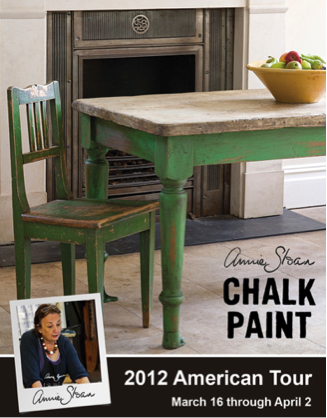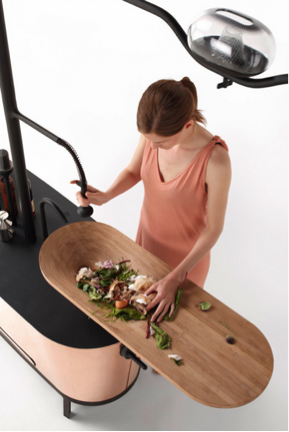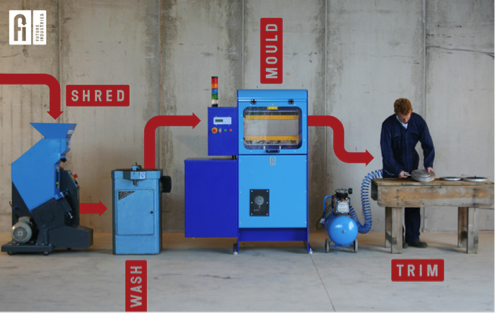The article is written by Greg Taylor, Director of Brand Provocation at Elmwood, London
Here in the UK last week, we hit the first double-dip recession since the 1970s. But there wasn’t wall-to-wall coverage or even that much front-page news. Do we have a collective sense of inevitability? Are we a nation resigned to economic depression? Or do we have a growing determination to take matters into our own hands and build our own futures? Now is the time for each and every one of us to reboot our own ‘home’ economy and build a new ‘homestyle’, a way of living that makes more of the spaces we find ourselves in. After all, home is where the heart is.
A new kind of DIY makeover
There’s a natural relationship between the style of our daily surroundings and how we feel. A great space can make us feel better, more hopeful and even more productive. And we often use our own space to express a vision of ourselves.
Home is a good place to make a new start. It’s the space where we have more control – particularly when growing urbanisation, addictive technology and an overwhelming sense of 24/7 leaves us feeling as though the wheels have come off. We ask ourselves where our me-time has gone and why we lack a real connection with those around us. This leads us to question our sense of productivity, both personally and socially.
It’s in these moments we rediscover some fundamental home truths and what’s really important. Ford-Novello’s 1914 wartime song ‘Keep the home fires burning’ includes the lyrics ‘dream of home’ and ‘turn the dark cloud inside out’, capturing the idea that home can be the place to start to overcome adversity and austerity. It’s the place to begin any life makeover.
Homesteading
So how are we going about making our homes more pro-active and more productive, like the homesteads back in the days of the Wild West? We need to think about our homes as economic engines that not only say something about us but also save and make money too. There are three things driving this. Firstly, we have to as there’s less money around. Secondly, the intelligent technology coming into play means we just can and thirdly, because is it feels good. It’s more creative, and it’s better for the planet. All this against a blurring home/work backdrop makes for exciting times.
There’s a lot more mend and make do around than there used to be. Certainly in my own home, it’s a case of paint the furniture rather than buy new stuff. Thank goodness for brands like Annie Sloan and her amazing chalk paint. Spontaneous splashing and dashing makes me feel more creative as I give a wardrobe a lick of paint and a whole new vibe reminiscent of French Rococo (or maybe it’s Swedish interior if I squint a little).
It’s brands like Annie Sloan that seem to be fuelling the Pinterest people of the US, where it’s largely been adopted by ladies interested in crafts, according to the wearesocial blog. They reckon Pinterest has 13 million users over there, something not to be sniffed at.
It’s not just a DIY paint job that can save you money and make you feel good. Beemania looks set to sweep the UK. Once the preserve of leading edge urbanites (or more rural beekeepers) and the rooftops of high-end emporiums like Fortnum & Mason, the DIY beehive may soon be found in every local garden centre. You’ll have the fruits of your labour for your toast of a morning and perhaps also some goods to barter with your neighbour. If you’d like something a little less DIY and a bit more beehaus, then check out Philips’ two-part affair that ‘aims to bring fresh honey right to people’s living rooms.’ Thanks to an ingenious mounting system, the portion that contains the honey is in the living room but the bees’ access to the hive is strictly from the outside.
Photo.
Painting and collecting honey may seem more earthy pursuits in the world of home economics, but it’s technology that’s the more sophisticated way to save and make money. Interestingly, according to Mintel, more 18-24-year-olds than 25-30 or 35-44-year-olds rate the cooker as one of the most important electrical devices.
So let’s tip our hats again to Philips, because they’re looking for ways to make the kitchen and sustainability cool with their microbial home project. It’s a domestic ecosystem that challenges conventional design solutions to energy, cleaning, food preservation, lighting and waste.
At its heart is the ‘bio-digester’ kitchen island, which uses bacteria to generate gas – it’s a kitchen that powers itself! Apart from the usual chopping surface and gas range, the bio-digester island, made from copper, cast iron, glass and bamboo, features a vegetable grinder and bacteria culture that lives on organic waste, producing methane gas. The gas is collected, burned, and fed to a cooking range and gas mantle lights. It’s also used to preheat water pipes leading to other parts of the house. So not only will we be able to be self-sufficient, saving the planet and all, we’ll feel pretty cool about it too.
Show us what you’re made of
Who knows where it could end? If the recession continues and we come to enjoy the benefits of a new homestyle way of living, we may end up taking this post industrial age full circle, bringing the factory in-house to make the home the new workplace.
In the future, we hope there’ll be many more initiatives like those from Future Industries which make it easier for us to set up our own production lines. Their ambition is to enable us to participate in the manufacturing process, to have within our reach the entire process of recycling plastic from waste to useable product. The leaders of the next economic revolution may be closer to home than we think.
About the Author

Greg Taylor became founding partner in global brand design consultancy Elmwood in 1989. Now Director of Brand Provocation, Greg is the creator and facilitator of Step Change™, Elmwood’s strategic tool for moving ideas forward. Clients include ASDA, Wal-Mart, Arla Foods, BBC, COI (Defra and DfT), Cable&Wireless, Comic Relief, Debbie & Andrew’s, Durex, Glasgow 2014 Commonwealth Games, McCain, and the Met Office.





